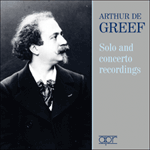Composed almost concurrently with the First Violin Concerto in 1917 was Prokofiev’s First Symphony—effectively, as one Moscow professor has impishly suggested, his belated graduation-style exercise to write an orthodox ‘Classical’ symphony. Prokofiev had graduated from the St Petersburg Conservatory in 1914, where he had studied conducting under Nikolay Tcherepnin. Tcherepnin had a particular enthusiasm for such late eighteenth-century Classical composers as Mozart and Haydn—this at a time when Haydn in particular was scarcely performed. During his conducting classes, Tcherepnin would sit by Prokofiev to point out felicities in their scoring—'Now listen to that delightful little bassoon there!' Prokofiev, at that time an enthusiast for Skriabin’s febrile harmonies, found the Classical composers’ clean-cut, orderly style and economical yet piquant orchestration a revelation. Although it seems an early version of the third movement Gavotte was composed before his graduation, it was only after the February Revolution of 1917 that he finally completed his Symphony No 1. This was partly as an exercise in writing music away from the piano to try to discover 'more transparent orchestral colours'. Prokofiev not only succeeded in this, but discovered a balletic grace quite unlike his galumphing first attempt at ballet, Ala i Lolli, abandoned in 1915. He himself named his symphony ‘Classical’ in order 'to tease the geese'. Indeed, it lives up to its name with a conventional four-movement symphonic scheme and its textbook-style sonata form for the first movement, with clearly punctuated exposition and development sections, then recapitulation. Prokofiev spices these conventions with individual touches of his own, playing harmonic sleights of hand with sudden shifts into alien keys—like the unnatural perspectives of an Escher drawing—and replacing the usual minuet and trio third movement with his favoured gavotte (its trio section given a pastoral flavour by its musette-style bass drone). However it is the music’s freshness, succinctness and unforced joie de vivre which has made Prokofiev’s affectionate pastiche of Haydn’s manner an enduring favourite.
from notes by Daniel Jaffé © 2005


 Arthur de Greef - Solo and concerto recordings
Arthur de Greef - Solo and concerto recordings
